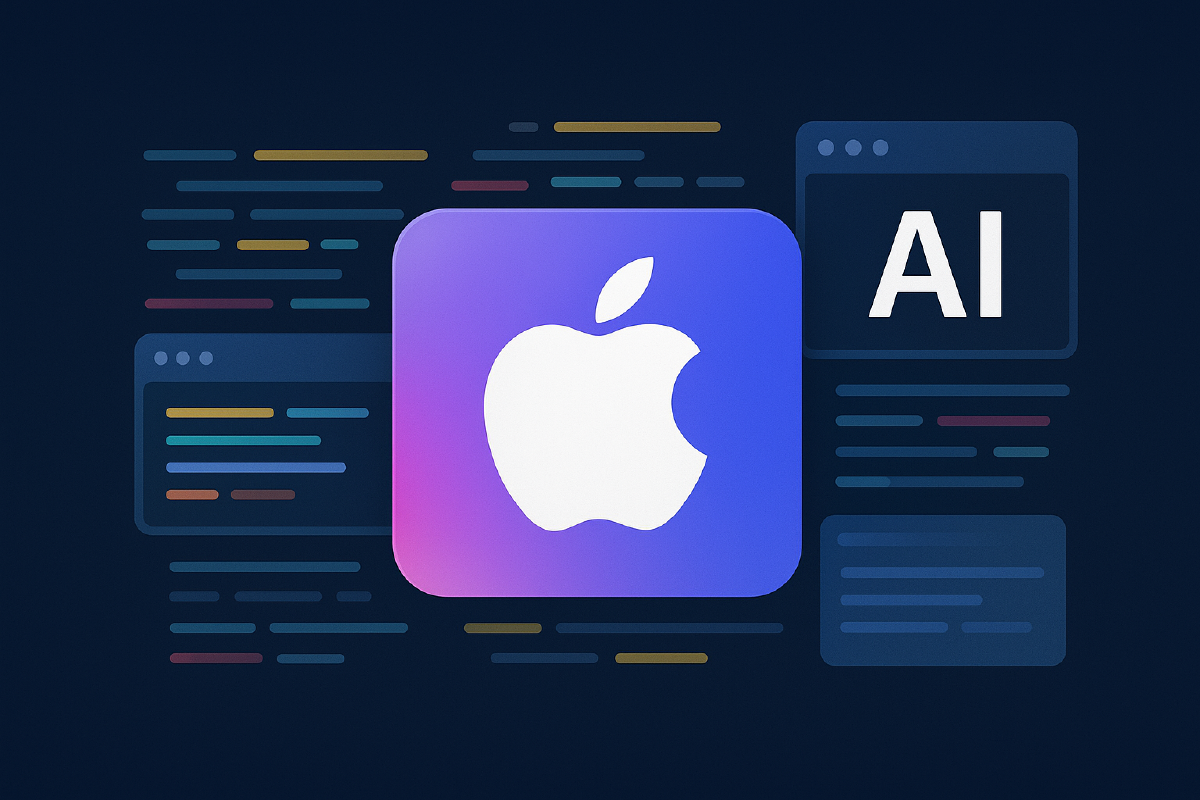Apple just made a move that feels surprisingly open for the famously closed-ecosystem company.
The company that built its empire on tight control and “it just works” exclusivity has opened the doors to its Apple Intelligence AI framework. Third-party developers can now tap into the same on-device AI that powers Siri and system features.
It’s not completely out of character (remember App Store, third-party keyboards, default apps), but it’s still a notable shift. And it raises bigger questions about where Apple is heading.
The Foundation Models framework#
At WWDC 2025, Apple quietly announced the Foundation Models framework, giving developers direct access to Apple’s 3-billion-parameter on-device language model.
What developers get:
- Text summarization capabilities built into Apple silicon
- Entity extraction for understanding content structure
- Creative content generation without cloud dependency
- On-device processing that never leaves the user’s hardware
- Optimized performance for iPhone, iPad, and Mac
All of this runs locally. No data sent to servers. No API costs. No internet required.
That’s very Apple. The opening it up part? That’s new.
Breaking the walled garden#
For decades, Apple’s strategy has been crystal clear: control the entire experience. Hardware, software, services, and ecosystem, all tightly integrated under Apple’s direct oversight.
Want to use Apple’s camera processing? Build for iOS.
Want access to Apple’s security features? Use Apple’s frameworks.
Want the best performance? Buy Apple hardware.
Want AI capabilities? Wait for Apple to build them into their apps.
The Foundation Models framework breaks this pattern. For the first time, Apple is saying: “Here’s our core AI technology. Go build whatever you want with it.”
The strategic shift#
Why would Apple open up one of its core competitive advantages?
Theory 1: Competitive pressure. Google’s Gemini powers Android apps directly, OpenAI partnerships are proliferating across platforms, and Microsoft is embedding AI everywhere. Apple’s “we’ll build it ourselves” approach works for hardware, but AI moves faster than hardware cycles.
Theory 2: Platform economics. If every iOS app uses Apple’s AI framework instead of external APIs, Apple controls the entire stack. Developers save on cloud costs, Apple gains deeper ecosystem lock-in, and user data never leaves Apple devices.
Theory 3: Privacy as competitive moat. While competitors burn billions on cloud infrastructure, Apple turns privacy constraints into advantages. On-device processing isn’t just private, it’s cost-effective at scale and works offline.
Theory 4: The app store problem. The most compelling AI apps might come from third parties, not Apple. If those developers can’t access Apple’s AI tools, they’ll build for platforms where they can, or use competing cloud services that Apple can’t control.
What developers can actually build#
The Framework enables apps that were previously impossible on iOS:
Educational apps could generate personalized quizzes from student notes, all processed locally. No cloud upload, no privacy concerns, works offline during exams.
Medical apps could analyze patient data and generate summaries without HIPAA compliance nightmares. The data never leaves the device.
Research tools could process confidential documents and extract key insights. Legal firms could analyze contracts locally. Journalists could organize sensitive source material.
Content creation apps could offer real-time writing assistance, grammar checking, and style suggestions without subscription APIs or internet dependency.
Productivity apps could automatically categorize emails, extract calendar events, and summarize meeting notes using the same AI that powers Apple’s own features.
The key advantage: instant responses, zero latency, no API costs, complete privacy. But there’s a trade-off.
The limitations nobody talks about#
On-device AI sounds great until you hit the constraints:
Model size limitations. 3 billion parameters is substantial for a phone, but tiny compared to GPT-4’s trillion-plus parameters. Apple’s model will handle basic tasks well, but complex reasoning or specialized knowledge? That’s where cloud models still dominate.
Device dependency. Only works on recent Apple silicon (M1 and later for Macs, A17 Pro and later for iPhones). Older devices are left out, fragmenting the developer experience.
Apple’s control. Developers building on Foundation Models become dependent on Apple’s roadmap. If Apple decides to change the API, restrict access, or prioritize their own apps, third parties have limited recourse.
Performance trade-offs. On-device processing drains battery and competes with other system resources. Complex AI tasks might slow down the entire device experience.
Training data constraints. Apple’s model is trained on Apple’s curated data. For specialized domains or recent information, cloud models with continuously updated training data will likely outperform.
The bigger questions#
Is this a shift away from the walled garden? Opening core AI capabilities suggests Apple is willing to trade some control for broader adoption. But this could be strategic openness, not fundamental change.
What happens to Apple’s AI competitive advantage? If every developer can access the same AI capabilities, Apple’s differentiation shifts from exclusive features to superior integration and hardware optimization.
Is Apple becoming a platform company? This move suggests Apple recognizes that the best AI applications might come from third parties, not first-party development. That’s a notable strategic evolution.
How does this affect the AI race? Apple just gave thousands of developers access to privacy-first AI capabilities. If adoption succeeds, it could pressure other platforms toward on-device processing.
The developer calculus#
The framework addresses real developer pain points:
- Cost concerns with cloud AI services (OpenAI API costs can be prohibitive for small teams)
- Latency issues for real-time applications (cloud round-trips vs instant on-device processing)
- Privacy requirements for sensitive data (HIPAA, GDPR compliance becomes simpler)
- Offline functionality for unreliable connections
But there’s strategic risk. Developers building on Foundation Models become more dependent on Apple’s roadmap and priorities. Apple’s track record with developer-facing APIs has been mixed, with frequent deprecations and policy changes.
What comes next#
This could be the beginning of broader strategic changes for Apple, or it could be a limited experiment.
If the Foundation Models framework drives significant developer adoption and creates compelling user experiences, expect Apple to open more core technologies. If it creates more problems than opportunities, expect Apple to quietly restrict access or limit the framework’s scope.
The key question: Is Apple ready to balance platform openness with product control?
The company that perfected “it just works” through tight integration now has to make that same experience work when thousands of developers are building on their foundation.
That’s a very different challenge than building great hardware.
Learn more: Apple’s official documentation for the Foundation Models framework provides technical details for developers interested in integration.


